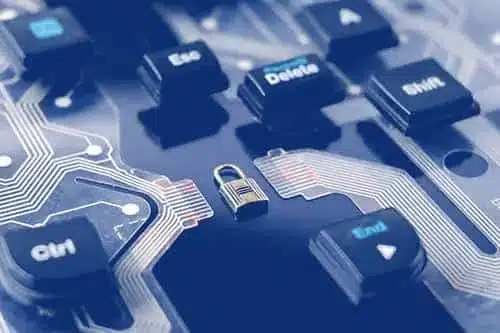Demystifying Software Licenses
February 28, 2023
3 min read
February 28, 2023
3 min read
The world of IBM licenses, including maintenance and support agreements, can seem dense and impenetrable. However, a little thing like remembering to keep track of your legal contracts and maintenance agreements every year can help stave off potential issues.
Origina General Counsel Guy Tritton discussed the structure and anatomy of IBM licensing in the second of his webinars, the “Above the Law Series: IBM Software Agreements.”
A barrister for 25 years, Tritton also serves as the company’s Chief Risk Officer and Data Protection Officer. He has appeared before almost every court in the U.K. and Europe, including the European Patent Office, the European Union Intellectual Property Office, the Court of Justice of the European Union, and the Supreme Court of the United Kingdom. Tritton also is the author of “Tritton on Intellectual Property Europe, 6th Edition,” which focuses on European intellectual property laws and is widely studied in universities.
Most contracts are straightforward — one person agrees to do this, the other person agrees to that — both parties sign on the bottom line and it becomes a binding legal contract.
Licenses are a little different.
Licenses are agreements that grant permission to do something that would otherwise be an infringement of intellectual property rights.
They can have other provisions, such as payment terms or audit provisions, that are part of the bargain reached between the two parties. The difference is that if you breach an audit provision, that does not mean you are infringing on copyright.
However, if you have a license to install 10 copies of software and you install 20, not only are you in breach of agreement, but you’re also infringing on the copyright.
Software companies use a set of metrics for their licenses, including the following:
Tritton suggests being hyperaware of what your software licenses say.
The general anatomy of an IBM license contains three parts:
Terms and conditions for these licenses change constantly, so it best to check IBM’s website frequently to stay up to date, particularly when renewing.
Then there are full-capacity and sub-capacity licenses. Full capacity refers to the overall number of processor cores on the physical server upon which the product is installed. Since many companies do not use all their processor cores every day, there is a sub-capacity license, which refers to the overall number of processor cores available to the software product at any given time.
“The more powerful the processor, the more PVUs you have to buy,” says Tritton.
Some people mistakenly believe sub-capacity licensing applies to all operating systems, but it doesn’t. Tritton cautions to be hyperaware of whether sub-capacity licensing is allowed.
“Otherwise, you’ll be deemed to be on a full-capacity license,” Tritton says. “And that could be very costly.”
There are three main things to be vigilant about when dealing with your licenses.
“Remember when you renew, you are accepting the latest LI terms,” says Tritton.
Gain insight into industry-only news, access to webinars, tips and tricks, blog posts, podcasts, and guides, surrounding topics like cybersecurity, reducing software support and maintenance costs and much more, all delivered to your inbox each month.
LEARN MORE